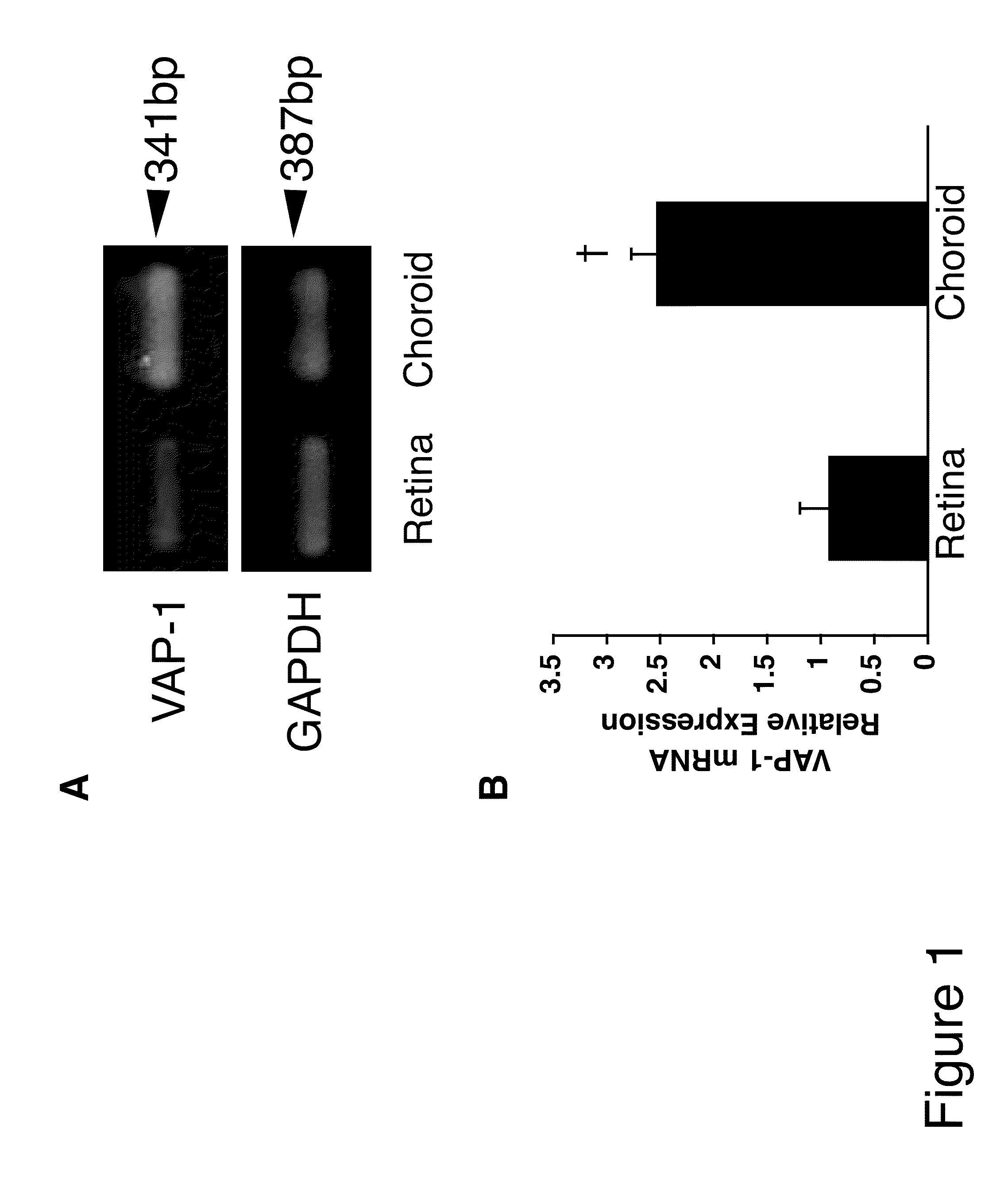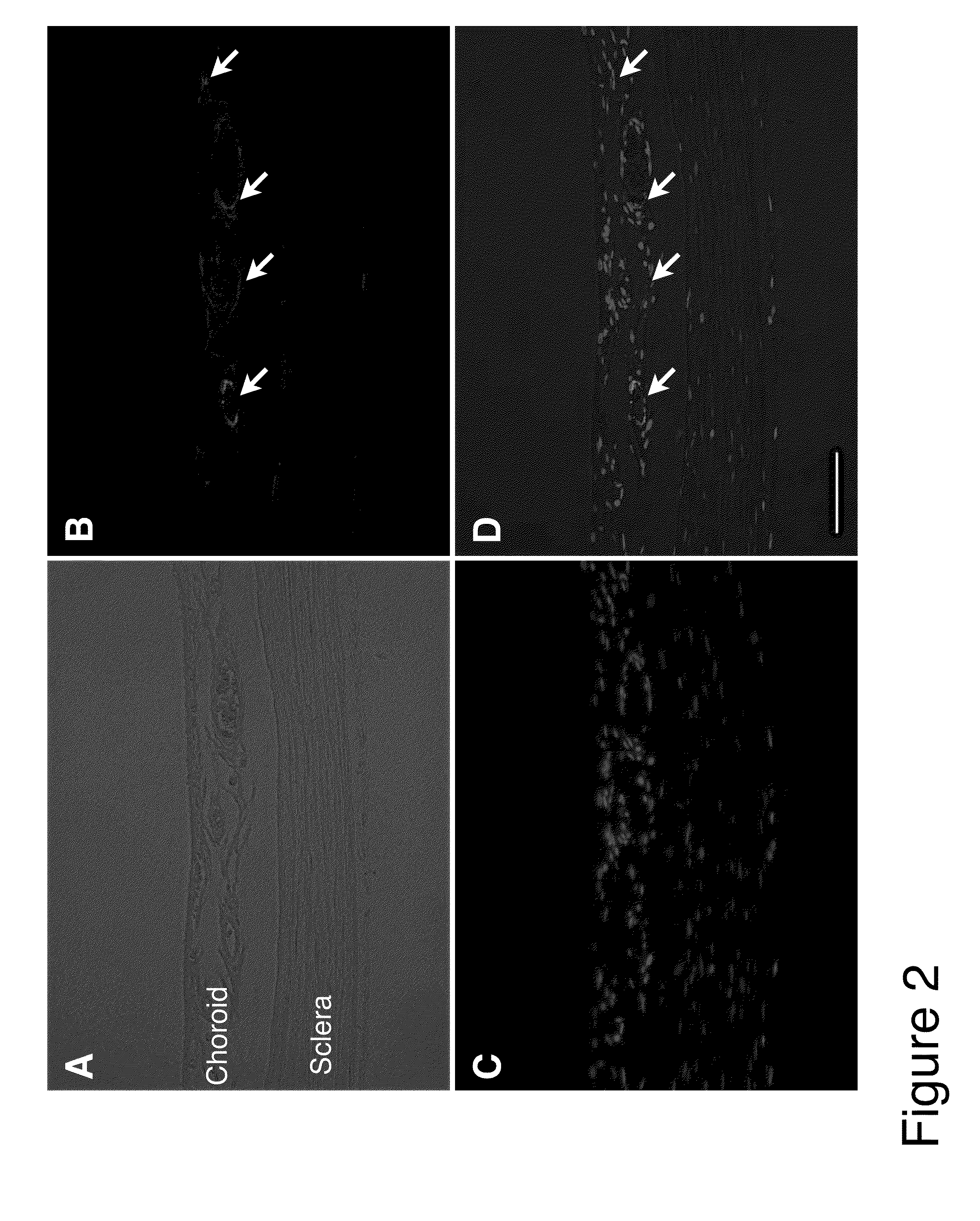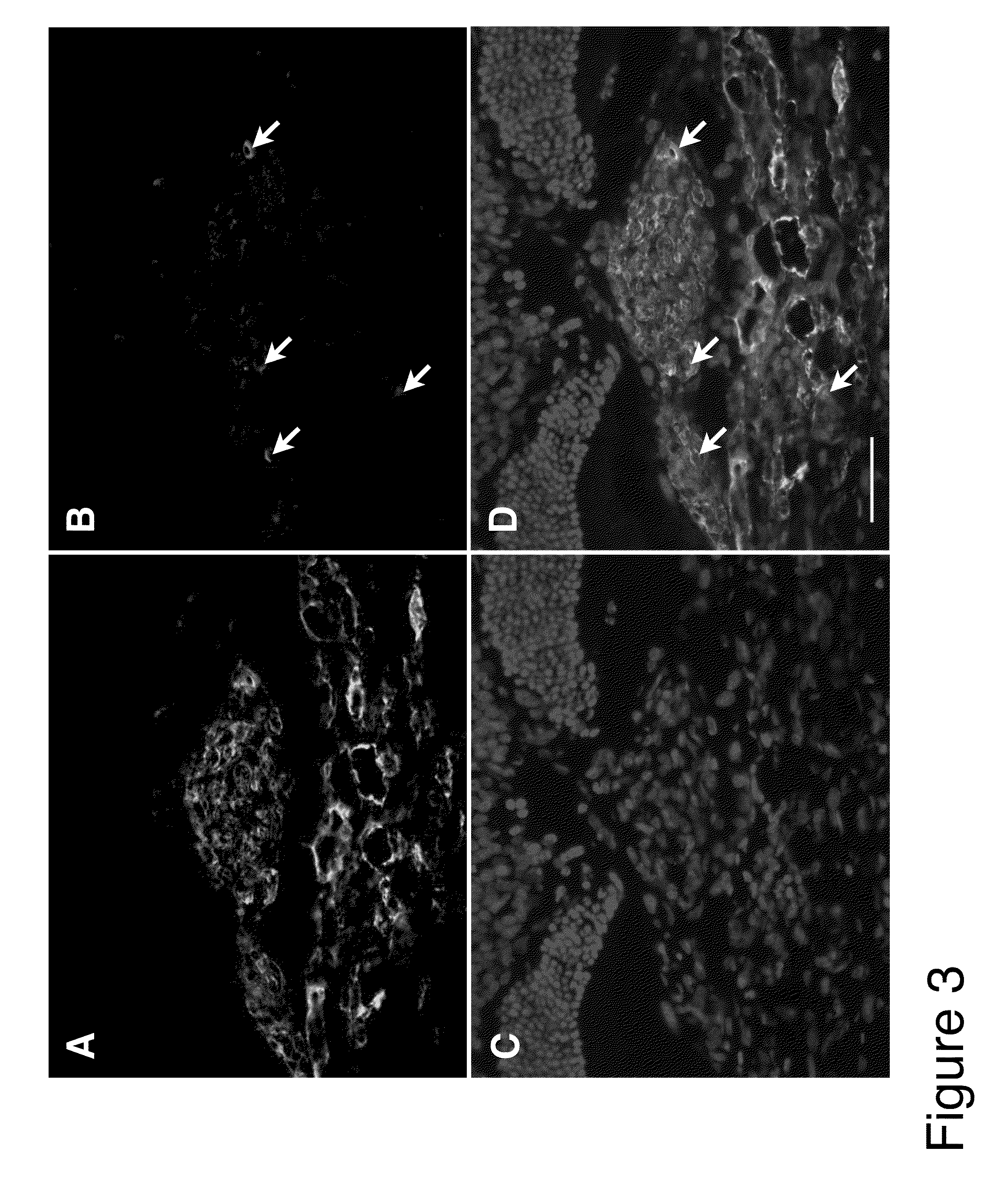Methods and compositions for treating conditions associated with angiogenesis using a vascular adhesion protein-1 (vap 1) inhibitor
a technology of vascular adhesion protein and angiogenesis, which is applied in the field of methods and compositions for treating conditions associated with angiogenesis, can solve the problems of excessive or insufficient blood vessel growth, ulcers, strokes, etc., and achieve the effect of enhancing, adding and/or synergizing the therapeutic effect of vap-1 inhibitors and/or additional treatment and/or additional agents
- Summary
- Abstract
- Description
- Claims
- Application Information
AI Technical Summary
Benefits of technology
Problems solved by technology
Method used
Image
Examples
example 1
VAP-1 Blockade Suppresses CNV
[0171]VAP-1 is an endothelial cell adhesion molecule involved in leukocyte recruitment. Macrophages play an important role in the development of choroidal neovascularization (CNV), an integral component of age-related macular degeneration (AMD). Previously, it was shown that VAP-1 is involved in ocular inflammation. In this Example, the expression of VAP-1 in the choroid and its role in CNV development was investigated.
[0172]These data show that VAP-1 was expressed in the choroid, exclusively in the vessels, and colocalized in the vessels of the CNV lesions. In addition, these data show that VAP-1 blockade with a specific inhibitor (Compound II, described above) significantly decreased CNV size, fluorescent angiographic leakage, and the accumulation of macrophages in the CNV lesions. Further, these data show that VAP-1 blockade significantly reduced the expression of inflammation-associated molecules such as tumor necrosis factor (TNF-α), monocyte chemoa...
example 2
VAP-1 Inhibition Suppresses Corneal New Vessel Growth
[0219]In this experiment, the role of VAP-1 in corneal angiogenesis and in corneal lymphangiogenesis was investigated. Specifically, the VAP-1 inhibitor, Compound II as described above, was administered to animal models of corneal angiogenesis and lymphangiogenesis. Results of this experiment identify VAP-1 as a molecular target in the prevention and treatment of both corneal angiogenesis and corneal lymphangiogenesis, as well as other angiogenic and lymphangiogenic conditions.
[0220]a. Methods
[0221]Experimental Animals
[0222]BALB / c mice were anesthetized by intraperitoneal (i.p.) injection of pentobarbital sodium (60 mg / kg). Hydron pellets (0.3 μl) containing 30 ng mouse IL-1β (401-ML; R&D Systems) were prepared and implanted into the corneas. See FIG. 9. Pellets were positioned 1 mm from the corneal limbus. Implanted eyes were treated with Bacitracin ophthalmic ointment (E. Fougera & Co.) to prevent infection.
[0223]VAP-1 Inhibitio...
example 3
VAP-1 Inhibition Suppresses Metastatic Tumor Growth
[0242]The following experiment describes a method for observing the ability of a VAP-1 inhibitor to suppress metastatic tumor growth.
[0243]a. Method
[0244]Animals with a Lewis lung carcinoma tumor between 600-1200 mm3 in size are sacrificed and the skin overlying the tumor is cleaned with betadine and ethanol. In a laminar flow hood, the tumor tissue is excised under aseptic conditions. A suspension of tumor cells in 0.9% normal saline is made by passage of viable tumor tissue through a sieve and a series of sequentially smaller hypodermic needles of diameter 22- to 30-gauge. The final concentration is adjusted to 1×107 cells / ml and the suspension is placed on ice. After the site is cleaned with ethanol, the subcutaneous dorsa of mice in the proximal midline are injected with 1×106 tumor cells in 0.1 ml of saline.
[0245]When tumors reach 1500 mm3 in size, the tumors are surgically removed from the mice. The incision is closed with sim...
PUM
 Login to View More
Login to View More Abstract
Description
Claims
Application Information
 Login to View More
Login to View More - R&D
- Intellectual Property
- Life Sciences
- Materials
- Tech Scout
- Unparalleled Data Quality
- Higher Quality Content
- 60% Fewer Hallucinations
Browse by: Latest US Patents, China's latest patents, Technical Efficacy Thesaurus, Application Domain, Technology Topic, Popular Technical Reports.
© 2025 PatSnap. All rights reserved.Legal|Privacy policy|Modern Slavery Act Transparency Statement|Sitemap|About US| Contact US: help@patsnap.com



